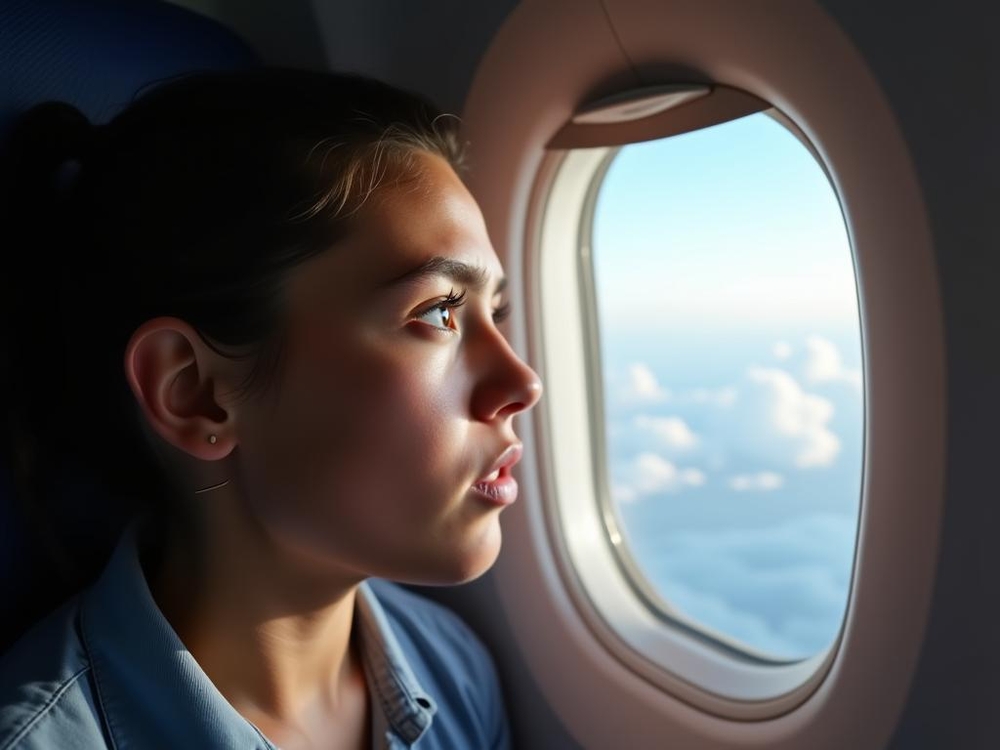Published
- 3 min read
Overcome Fear of Flying: Tips & Techniques

Tips for overcoming your fear of flying, why it happens, and more
Millions of people travel by plane every day. Even with air travel being very safe, many still feel anxious when flying. Maybe you too sit there, gripping those armrests, counting down the minutes until you land.
While some can shrug the worry off, others face a deeper fear — aviophobia, or flight anxiety. This nagging anxiety can stem from past experiences or horror stories about crashes that haunt the news.
Why is fear of flying a big deal?
Nowadays, flying is a crucial part of daily life. We fly to visit family far away, for work, and for vacations. Fear of flying can limit these opportunities.
Around one in three people experience some anxiety about flying. This fear can prevent personal and professional growth. It affects not just travel plans, but also job opportunities and relationships.
How to manage your fear of flying
1. Stay centered
Focusing on your breathing can ease anxious thoughts. Inhale for four counts and exhale for six. As you breathe, think about the safety of flying. It is more reliable than driving. It helps to imagine the joy of reaching your destination.
2. Find internal focus
Try a grounding technique. Cross your ankles and hands while breathing deeply. Use your senses. Look for five things you can see, four you can touch, three you can hear, two you can smell, and one you can taste. Carry a stress ball or smooth stone to channel that nervous energy.
3. Calm your space
Lower the window shade. Wear noise-canceling headphones. These can block stressful distractions. An eye mask can help, too, creating a calm personal bubble.
4. Expect anxiety
Prepare mentally before flying. Practice meditation or consult a therapist. Knowing what to expect at the airport can also reduce stress.
5. Distractions
Take along your favorite shows, books, or puzzles. Podcasts and journaling help too. Distractions can shift your focus away from anxiety.
6. Limit anxiety triggers
Stay away from caffeine or sugary foods that might heighten your anxiety. These can make fear more difficult to handle.
7. Identify the root of your fear
Find what stirs your worry. Maybe it’s the lack of control? Learning about aviation safety can help. If it’s claustrophobia, request an aisle seat for more space.
Chrissie, a Healthline Employee, says:
“I remind myself about all the flights that land safely each day. Sitting by the window helps me see that the plane is fine even during turbulence, and I enjoy the scenery.”
When should you seek professional help?
If anxiety is disrupting your daily life, consider reaching out to a professional. They can help find the root of your fear. Treatment might include medications or therapy. Cognitive behavioral therapy is especially effective for aviation fears.
How to overcome fear of flying?
Overcoming the fear of flying takes time. Start with small steps. You might book a short flight just to practice. This is a chance to use all those new techniques. Virtual reality therapy is another option. It lets you experience flight scenarios in a controlled environment. Professional guidance and self-help strategies together can ease your travel experience.
Final thoughts
Flying is safe and fast. It’s a bridge to new places and opportunities. Your fear doesn’t have to keep you grounded. With the right help, you can manage and even overcome this fear. You can expand your world one flight at a time.
This article covered suggestions on managing flight anxiety. Next, think about when you’ll take that first practice flight. Visualize using these steps to help ease your fear. Understanding and confronting this anxiety is the path to opening new doors.